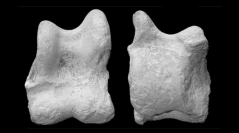

 Comptes Rendus Palevol
12 (1) - Pages 1-11
Comptes Rendus Palevol
12 (1) - Pages 1-11The Burdur Basin is one of the NE-trending extensional orogen-top basins of SW Anatolia hosting alluvial-fan, fluvial and lacustrine deposits from the Late Miocene onward. The remains of Equus (Allohippus) sp., Paracamelus cf. gigas, and medium-sized deer (Cervidae gen. indet.) from the uppermost reach of the basin-fill succession show an interregional palaeobiogeographical linkage. The composition of fossil associations is typical for the Villafranchian of eastern Europe and central Asia. The architecture of the basin-fill stratigraphy and associated fossil taxa refines the Early Pleistocene regional palaeogeography and biodiversity of Anatolia drawn over the Eurasian migration pattern.
Burdur Basin, SW Anatolia, Allohippus, Paracamelus, Early Pleistocene